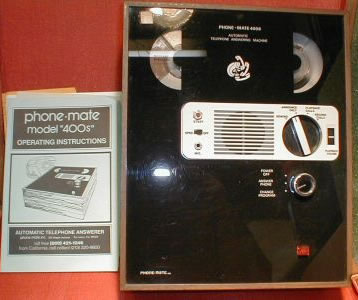The 1970s marked the beginning of a new era in answering machine history. AT&T, which had been repeatedly accused of exploiting its monopoly on American telephone service, found itself in the throes of yet another antitrust suit. Popular resentment against “the phone company” or “Ma Bell” as it was called reached a new high. When inexpensive, imported telephones became available in the late 1960s, many consumers installed them with or without their local telephone company’s knowledge, and despite regulations forbidding them.
At about the same time, the telephone answering machine was becoming less expensive and more convenient to use because of the appearance of inexpensive microelectronics. One of the first products oriented toward the home consumer was the PhoneMate, introduced in 1971, which featured cheap, consumer-grade construction. By mid-decade, answering machines cost only $125-600– the low cost machines in other words costing less to buy new than to rent for a year or so. Sales began to grow, reaching 400,000 units in 1978.
The dam broke in the 1980s, when AT&T divested itself of the local operating companies. While a few companies tried to maintain their equipment rental income, most abandoned the telephone and answering machine business to the consumer electronics firms. Truly cheap (sometimes less than $25) answering machines flooded into the market, provided almost exclusively by Asian firms (or made by them and sold under U.S. trade names). By 1982, the number of answering machines sold had already reached 800,000.
